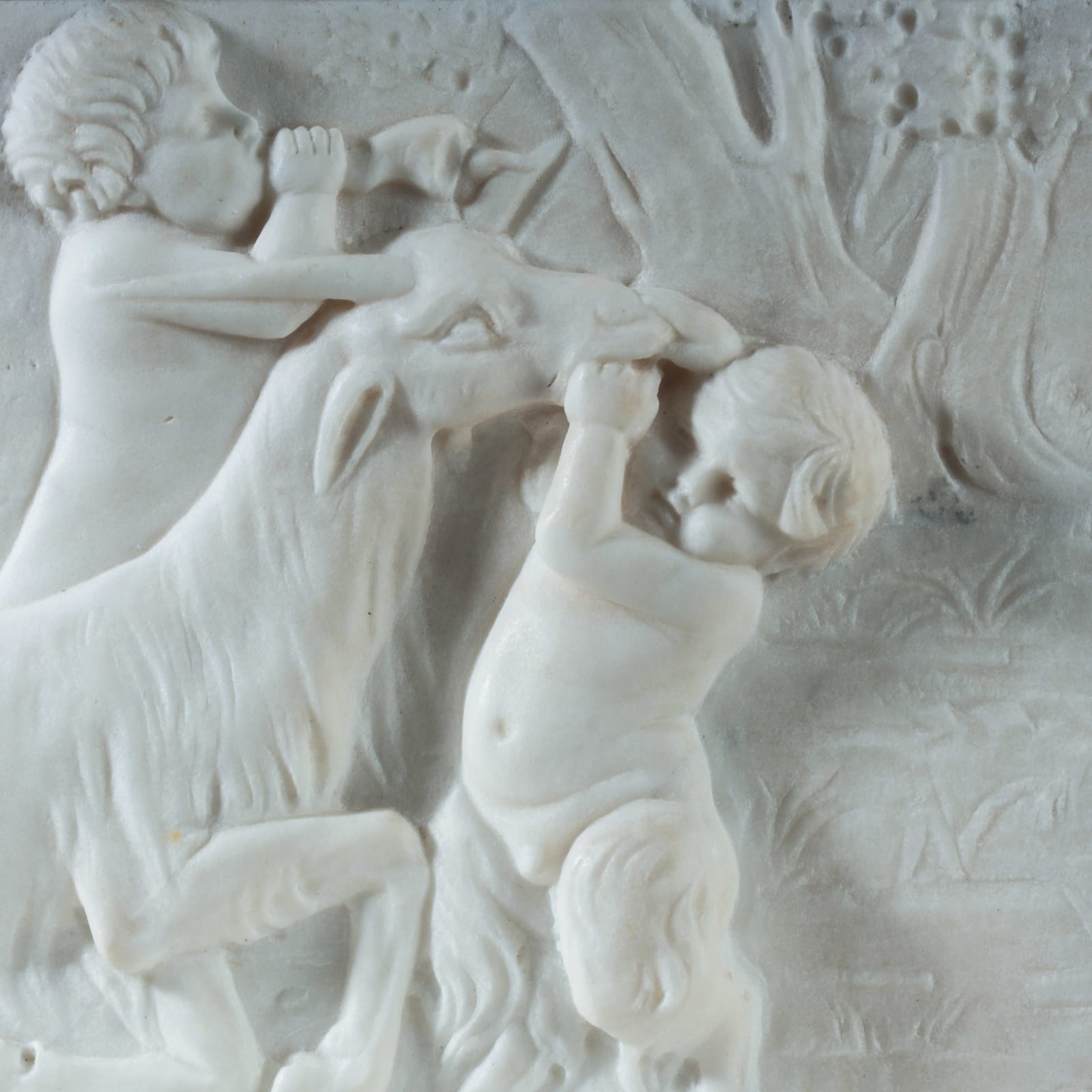Henry Cheere I
A Carved White Marble Tablet Depicting Bacchic Putti with a. Goat
English, in the manner of Sir Henry Cheere circa 1755-1775
Provenance: Private Collection (United Kingdom)
Height: 33cm Width: 56cm Depth: 5cm
A finely carved statuary marble tablet of rectangular form, depicting three putti in animated Bacchic revelry. One putto reclines while drinking from a horn shaped vessel, another steadies a capering goat with both hands and a third pours from a krater or wine jug beneath a garlanded tree heavy with grape clusters. The low relief composition is set against a subtly modelled landscape, with tufts of ground foliage and a classically idealised tree framing the scene.
The scene draws iconographic inspiration from ancient Roman sarcophagi and Renaissance interpretations thereof, and stylistically resonates with mid- 18th century English neoclassicism. The carving style reflects the influence of Sir Henry Cheere (1703-1781), the preeminent English sculptor of funerary and architectural sculpture during the reigns of George II and George III.
Cheere's Westminster workshop was known for suppling both grand commemorative monuments and refined decorative elements - including chimney tablets and friezes - for elite British patrons. The present plaque likely once served as the central tablet of a chimneypiece, its form and scale consistent with decorative schemes commissioned for London townhouses and country seats during the Georgian period.
English, in the manner of Sir Henry Cheere circa 1755-1775
Provenance: Private Collection (United Kingdom)
Height: 33cm Width: 56cm Depth: 5cm
A finely carved statuary marble tablet of rectangular form, depicting three putti in animated Bacchic revelry. One putto reclines while drinking from a horn shaped vessel, another steadies a capering goat with both hands and a third pours from a krater or wine jug beneath a garlanded tree heavy with grape clusters. The low relief composition is set against a subtly modelled landscape, with tufts of ground foliage and a classically idealised tree framing the scene.
The scene draws iconographic inspiration from ancient Roman sarcophagi and Renaissance interpretations thereof, and stylistically resonates with mid- 18th century English neoclassicism. The carving style reflects the influence of Sir Henry Cheere (1703-1781), the preeminent English sculptor of funerary and architectural sculpture during the reigns of George II and George III.
Cheere's Westminster workshop was known for suppling both grand commemorative monuments and refined decorative elements - including chimney tablets and friezes - for elite British patrons. The present plaque likely once served as the central tablet of a chimneypiece, its form and scale consistent with decorative schemes commissioned for London townhouses and country seats during the Georgian period.







